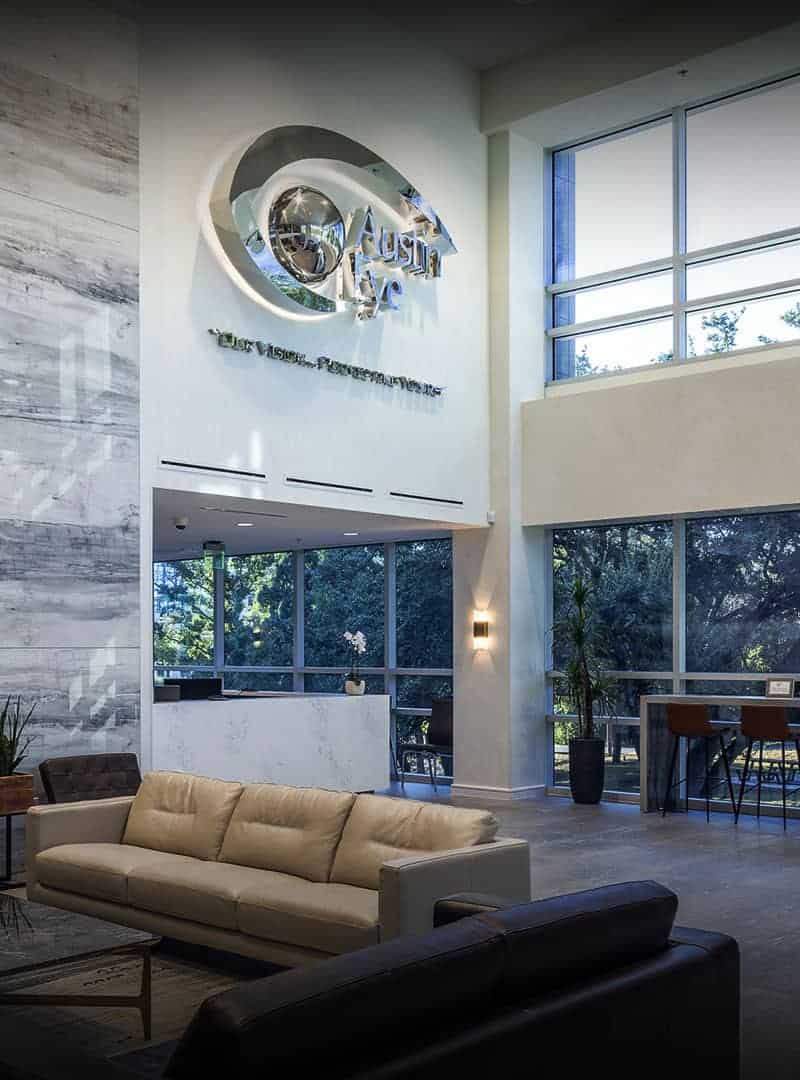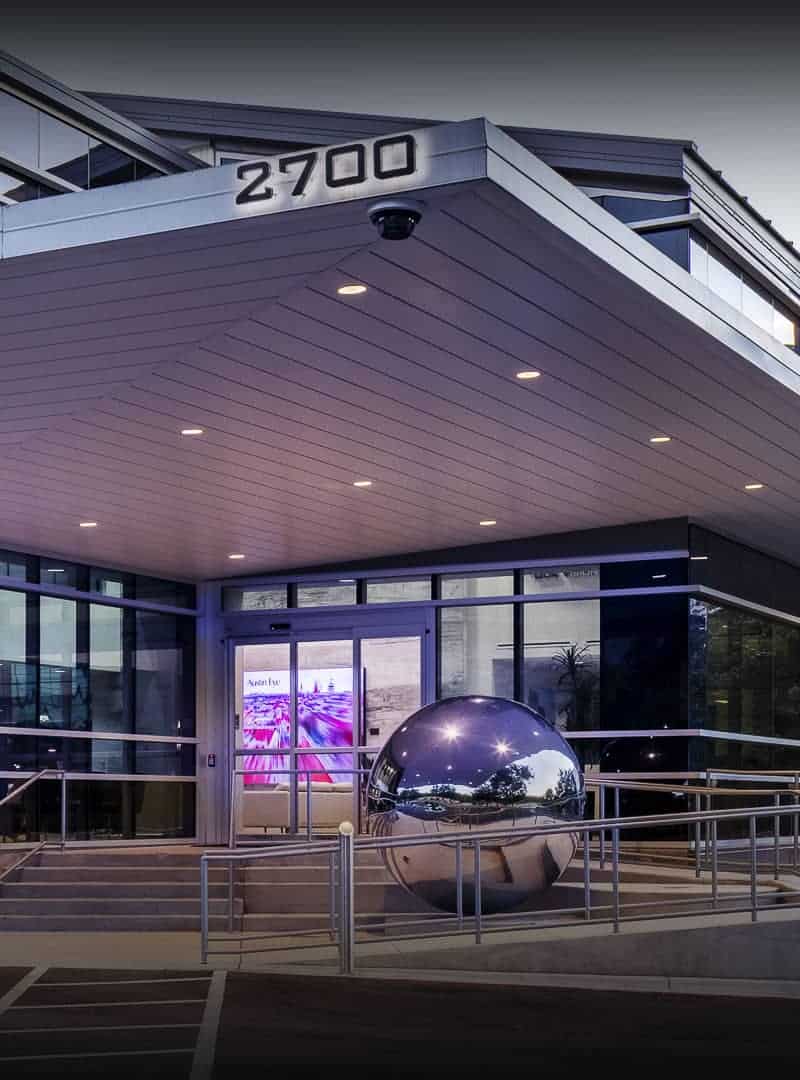Austin TX Glaucoma Surgery
Selective Laser Trabeculoplasty (SLT) FREQUENTLY ASKED QUESTIONS
How successful is the SLT laser treatment at reducing eye pressure for individuals suspected of having glaucoma?
Approximately 96% of patients treated experience a 31% reduction in eye pressure after SLT in the treated eye.
Why should I have SLT laser treatment rather than use eyedrop medications to control my eye pressure in glaucoma?
- Convenience: you can purchase and use eyedrops all your life OR have a 2 minute procedure that reduces or eliminates your reliance on using medications.
- Compliance: many individuals forget to take their eyedrops and therefore do not control their glaucoma effectively. The SLT treatment works 24/7 without eyedrops.
- Effectiveness: (see above on the success rate)
- Safety: There are few if any long-term risks associated with the SLT laser treatment.
- Repeatability: The SLT treatment can be repeated to augment the initial effect if necessary.
- Cost: Medicines are expensive over the long-term. SLT surgery is covered by your medical insurance and provides long-term eye pressure control reducing or eliminating dependence on medicines to control glaucoma.
If I am already on glaucoma medicines, why should I consider using SLT to treat my glaucoma?
In a recent study, it was determined that after SLT laser surgery, 86% of individuals on one glaucoma medicine, 62% of individuals on 2 glaucoma medicines, 42% of individuals on 3 glaucoma medicines, and 32% of individuals on 4 glaucoma medicines were able to stop all medicines due to adequate eye pressure control after SLT laser surgery.
What should I expect during the first day after undergoing SLT?
Your vision will initially be slightly blurred and your eye may have a slight ache or soreness and redness that resolves within 1-2 days. You may take Ibuprofen or Tylenol to alleviate any ache or soreness.
Are there limitations or restrictions that I should be aware of after SLT?
No. You may resume normal activities without restrictions immediately after surgery.
How soon after surgery should I return for a follow-up evaluation?
We will ask you to be seen between 11–14 days after SLT surgery to evaluate the initial response to treatment and to have SLT treatment to your second eye if necessary.
How soon will I know if the SLT laser treatment has helped reduce or control my eye pressure?
We will know within 2–6 weeks if the SLT treatment has helped control your eye pressure.
How do I learn more about glaucoma and/or the SLT laser treatment for glaucoma?
- Click on the 3D-Eye Online box, click on the “Conditions” tab, then click on “glaucoma.”
- Go to www.glaucomaslt.com
Manage Glaucoma with the iStent Trabecular Micro-Bypass

Austin Eye is eager to report that advancements in eye care technology have led to the development of an innovative option for the management of glaucoma: Minimally Invasive Glaucoma Surgery (MIGS) with the iStent Trabecular Micro-Bypass and the Kahook Dual Blade (KDB). If you have been diagnosed with both open-angle glaucoma and cataracts, the iStent or KDB may be an effective, convenient way for you to manage your glaucoma.
One of the most common ways to manage open-angle glaucoma is with the use of daily eye drops that are prescribed by your Austin Eye ophthalmologist. However, using one, two, three or even four types of eye drops per day for the rest of your life can be bothersome. Not to mention, the cost of the medicated eye drops can really add up over a lifetime.
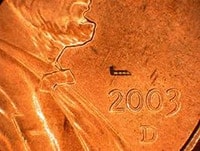
The exciting news is that now, with the MIGS, you may be able to forgo or greatly reduce the use of those pesky eye drops while still alleviating excess eye pressure and managing your mild-to-moderate glaucoma.
How the iStent Works
The world’s smallest medical implant device, the iStent is designed for placement in the eye as part of cataract surgery. To put it in relative terms, the iStent is 20,000 times smaller than the intraocular lens implant (IOL) used in cataract surgery. However, this miniscule device delivers big results.
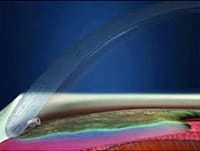
With open-angle glaucoma, the eye’s natural drainage channel becomes obstructed, so the fluid that circulates inside the eye cannot drain properly. When the fluid builds up, it causes an increase in pressure on the eye. Over time, this increased pressure can lead to irreversible vision loss.
Once the iStent is implanted in the eye during cataract surgery, it provides a permanent opening through the blockage, allowing fluid to drain more easily. This helps to control the intraocular pressure of the eye.

In a clinical study conducted in the United States, 68 percent of glaucoma patients who received the iStent were able to remain free of medication at the 12-month mark. These patients were able to sustain a target intraocular pressure of less than or equal to 21mm Hg; only 50 percent of patients who underwent cataract surgery without the iStent were able to sustain the same target intraocular pressure.
To learn more about the revolutionary iStent for the management of open-angle glaucoma, contact Austin Eye today.
How the Kahook Dual Blade Works
The KDB works in a manner similar to the istent. The KDB is used to create an opening in the trabecular meshwork which allows an open pathway for the fluid inside the eye to exit thus reducing eye pressure.
Unlike the istent, there is no implant left in the eye. The effectiveness of the istent and KDB on pressure reduction are similar.
For a brief educational video about how the KDB works please visit the following link: https://youtu.be/g-JCLj_F-lc
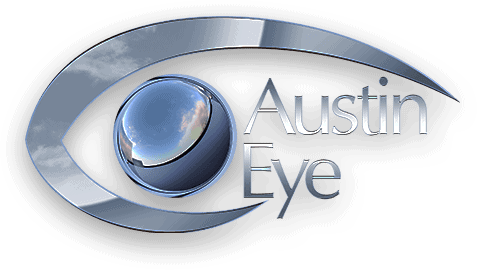

The Mitchel and Shannon Wong Eye Institute

The Mitchel and Shannon Wong Eye Institute, recently created at the Dell Medical School, is poised to become a leading-edge center for training future ophthalmologists and providing patients with the best medical and surgical eye care possible.
Contact Austin Eye Today
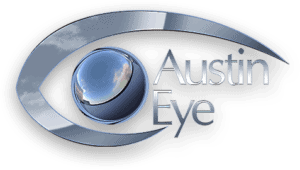
11901 Jollyville Road
Austin, TX 78759
Phone: (512) 250-2020
Fax: (512) 250-2612
Click here to “FLY-through” our Northwest Office
Office Hours
Monday – Thursday 8am – 6pm
Friday 8am – Noon
Saturday/Sunday Closed

2700 Bee Caves Road
Austin, TX 78746
Phone: (512) 250-2020
Fax: (512) 250-2612
Click here to “FLY-through” our Westlake Office
Office Hours
Monday – Thursday 8am – 6pm
Friday 8am – Noon
Saturday/Sunday Closed



